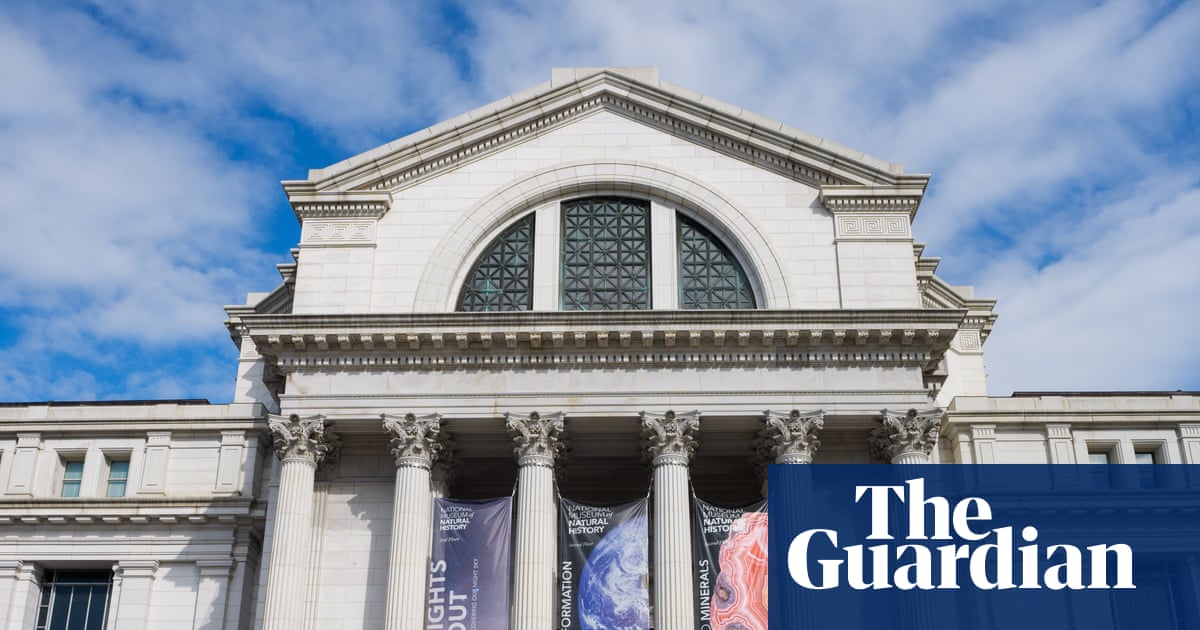President Donald Trump’s move to demolish part of the White House to make way for a $250 million ballroom is eliciting outrage and calls for more oversight before any further changes are made.
Images of a partially destroyed East Wing, first published by The Washington Post on Monday, sparked an outcry online and a quick defense from the White House.
The National Trust for Historic Preservation added to criticism of the administration in a letter to the National Park Service and other organizations Tuesday, warning that the current design of the ballroom threatens to “overwhelm” the White House and requesting a freeze on further construction until a commission that oversees the iconic urban landscape of the nation’s capitol is consulted.
“It’s not his house. It’s your house. And he’s destroying it,” said Hillary Clinton, the former first lady and the secretary of State for President Barack Obama, in a post on the social media site X.
White House press secretary Karoline Leavitt panned criticism of the demolition as “fake outrage” in a Tuesday interview with Fox News.
“I believe there’s a lot of fake outrage right now because nearly every single president who has lived in this beautiful White House behind me has made modernizations and renovations of their own,” she said, praising the president as “good at building things.”
“Construction is a process; at the end, the East Wing, which is an entirely separate structure from the executive mansion you see behind me, will be more modern and beautiful than ever,” Leavitt said.
Part of the criticism erupting this week is because Trump previously said construction of the ballroom wouldn’t affect the existing White House.
"It won't interfere with the current building,” he said in July. “It'll be near it but not touching it — and pays total respect to the existing building, which I'm the biggest fan of.”
The 90,000-square-foot ballroom will be able to accommodate 650 people — up from the existing 200-person capacity of the White House’s existing event space, according to White House plans. Trump on Monday said it would allow as many as 999 people to attend gatherings.
The new structure will mimic the existing architectural style of the White House, according to renderings on the White House webpage. That statement notes that the new ballroom will be located where the current East Wing is located.
The East Wing, which has long housed the first lady’s office and staff, was first built in 1902. It was expanded, and a second story added, in 1942 to cover the construction of the Presidential Emergency Operations Center, an underground bunker.
Carol Quillen, president and CEO of the National Trust, said in a statement that the White House’s current structure is carefully balanced, with the main house in the center and two smaller wings on either side.
“The building respects Georgian and neoclassical principles. It is a National Historic Landmark, a National Park, and a globally recognized symbol of our nation’s ideals,” she said, noting that the building is also owned by the American people and its design was chosen by the nation’s first president, George Washington.
In its Tuesday letter, the National Trust asked that the administration halt construction of the ballroom and follow the “legally required public review processes” before it continues. That process should include consultation with the National Capital Planning Commission — the planning authority for federal lands and buildings throughout the Washington region — and the Commission of Fine Arts, the letter states.
Neither commission responded to requests for comment Wednesday. Most federal agencies are shut down due to the federal funding lapse.
The National Park Service also did not respond to a request for comment.
Trump has committed to raising outside funds — from "patriot donors" — and making his own contribution to cover the $250 million cost of the renovation.
In its July statement on the construction, the White House said Trump held several meetings with the National Park Service, Secret Service and other staff to discuss the project.
But the White House had not sent a ballroom construction plan to the National Capital Planning Commission as of Tuesday, although it intended to do so soon, Reuters reported.
Trump’s appointee as chair of the National Capital Planning Commission, his White House staff secretary Will Scharf, stoutly defended the White House’s work during the commission’s last videotaped public hearing, held Sept. 4.
“I think it's one of the most exciting construction projects in the modern history of the District,” Scharf said, “and I think any assertion that this commission should have been consulted earlier than it has been or will be is simply false and represents a misunderstanding of this commission's role in that project.”
Scharf said “the commission has long denied that it has jurisdiction over demolition and site preparation work on federal buildings, on federal property. … What we deal with is essentially construction, vertical build.”
Once the White House submits a plan to the commission, it will review that plan, Scharf said, adding that he was “excited” to see it.
Scharf added that the commission has a “long-standing [history] of working on projects on the White House grounds.”
During Trump’s first term for instance, the NCPC and the Commission on Fine Arts approved the president’s plans for a 1,200-square-foot tennis pavilion. The plan stated it was “informed by the existing architecture of the White House, including the East and West Colonnades.”
The 12-member National Capital Planning Commission includes three presidential appointees as well as appointees representing the D.C. mayor’s office, Congress, the General Services Administration, and the Interior and Defense departments.
The office of D.C. Mayor Muriel Bowser declined to comment.
Trump effectively seized control of the commission in July, when he appointed Scharf as the new chair, along with two other members. In 2021, President Joe Biden had likewise replaced Trump’s first-term nominees on the commission.
Biden’s appointees had considerable planning experience. One was a career architectural historian and preservationist, and the other was a longtime attorney and chair of a suburban county planning commission.
A one-time attorney general candidate and later a policy director for the Missouri governor, Scharf graduated from Princeton University and Harvard Law School and served on Trump’s defense team before joining the White House staff.
Scharf replaced the commission’s prior chair, a Biden administration appointee and experienced city planner and museum developer named Teri Hawks Goodmann.
“I worked extensively on economic development, tax credit issues and related permitting and planning issues, which is, I guess, my most relevant experience for the purposes of this commission,” Scharf said at his inaugural commission hearing on July 10.
The commission’s website currently is limited to a one-page reference to the federal government shutdown and a spokesperson could not be reached Wednesday, but the commission’s videotaped monthly meetings are available elsewhere online.
A second Trump appointee, James Blair, works in the White House as deputy chief of staff for legislative, political and public affairs. He graduated from Florida State University with a degree in finance and is a former GOP political consultant with no apparent planning or historic preservation experience.
“This is a very important mission to the president,” Blair said at his first commission meeting, “and as a builder by trade, he has a particular interest in design, planning, construction and all of those things.”
Trump’s appointee as vice chair, Stuart Levenbach, is the Office of Management and Budget’s associate director for natural resources, energy, science, and water. He earned a doctorate in marine ecology from the University of California, Santa Barbara.
Paul Schaefer, a new commission member representing the Defense Department, is a civilian civil engineer and former director of facilities for the Missile Defense Agency.

 German (DE)
German (DE)  English (US)
English (US)  Spanish (ES)
Spanish (ES)  French (FR)
French (FR)  Hindi (IN)
Hindi (IN)  Italian (IT)
Italian (IT)  Russian (RU)
Russian (RU) 























Comments